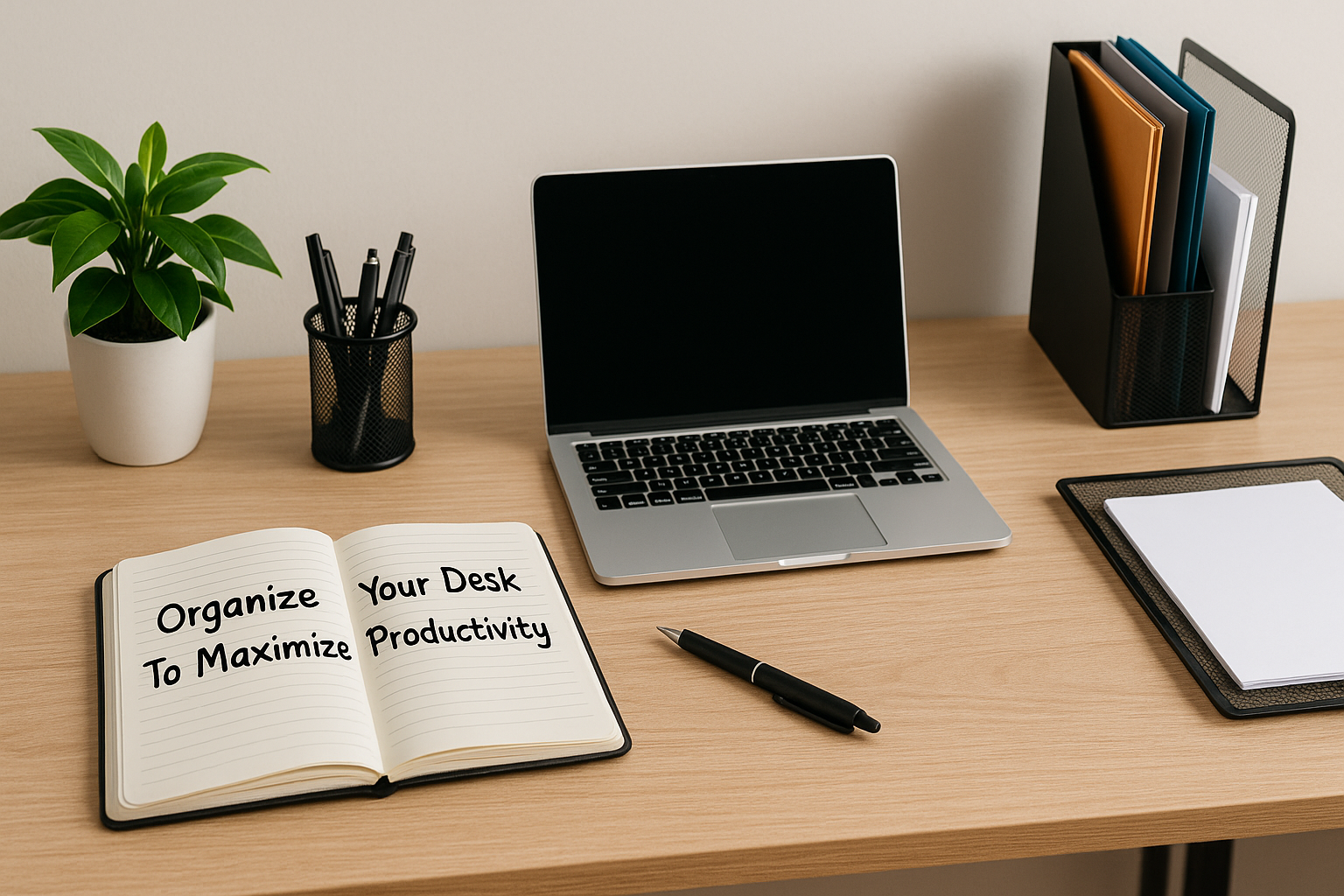Your physical workspace has a direct impact on your mental clarity and productivity. A cluttered, disorganized desk can lead to distractions, stress, and lost time searching for materials. In contrast, a clean and organized workspace promotes focus, efficiency, and creativity. In this article, we’ll explore practical strategies to organize your desk and create an environment that supports maximum productivity.
Start with a Clean Slate
Before you can organize your desk, you need to clear it completely. Remove everything — papers, office supplies, personal items — and clean the surface thoroughly. Starting with a clean slate allows you to rethink how you use your space and ensures that only necessary items return to your desk.
Keep Only Essentials Within Reach
Identify the items you use daily and keep them within easy reach. This usually includes:
- Your computer or laptop
- A notepad and pen
- Your phone (if necessary for work)
- Frequently referenced documents
Everything else should be stored elsewhere. Minimizing the number of items on your desk reduces visual clutter and creates a calmer, more focused work environment.
Create a Logical Layout
Arrange your desk layout in a way that supports your workflow. Place your most-used tools in the most accessible spots. If you’re right-handed, keep your phone, notepad, and frequently used supplies on the right side, and vice versa if you’re left-handed. This small adjustment can save time and reduce unnecessary movements during the day.
Implement Smart Storage Solutions
Effective storage prevents clutter from creeping back onto your desk. Use:
- Drawer organizers: To separate pens, paper clips, and small items.
- Vertical file holders: To store important documents neatly.
- Shelves or cabinets: For books, binders, or less frequently used materials.
Label everything clearly so you can find what you need without wasting time searching.
Adopt a Minimalist Approach
Less is often more when it comes to your workspace. Keep decorative items to a minimum — perhaps one or two personal touches like a framed photo or a small plant. A minimalist desk helps you stay focused and prevents distractions.
Use Cable Management Systems
Tangled cords can make your workspace look messy and create unnecessary stress. Use cable clips, sleeves, or ties to bundle cords together neatly. Consider wireless devices like a keyboard and mouse to further reduce cable clutter.
Digitize Documents Whenever Possible
Paper clutter accumulates quickly. Whenever feasible, scan documents and organize them digitally. Use cloud storage or reliable backup systems to keep important files secure and accessible. Going digital reduces the need for bulky file storage and makes your workspace cleaner and more flexible.
Set a Daily Reset Routine
At the end of each day, take a few minutes to tidy up your desk:
- File away papers
- Return supplies to their designated spots
- Wipe down your desk surface
This simple habit ensures you start each day fresh and focused, rather than wasting time dealing with yesterday’s clutter.
Personalize Wisely
While minimalism is key, your desk should still feel welcoming. Choose one or two items that make you happy or inspire you, such as a motivational quote, a piece of art, or a plant. A touch of personalization can boost your mood without creating distraction.
Transform Your Desk, Transform Your Workday
A well-organized desk is more than just a neat space — it’s a tool for higher productivity, better focus, and reduced stress. By setting up a workspace that supports your workflow, minimizing clutter, and maintaining daily organization habits, you create an environment that helps you perform at your best every day. Start organizing your desk today and experience the difference a clean, intentional workspace can make.

